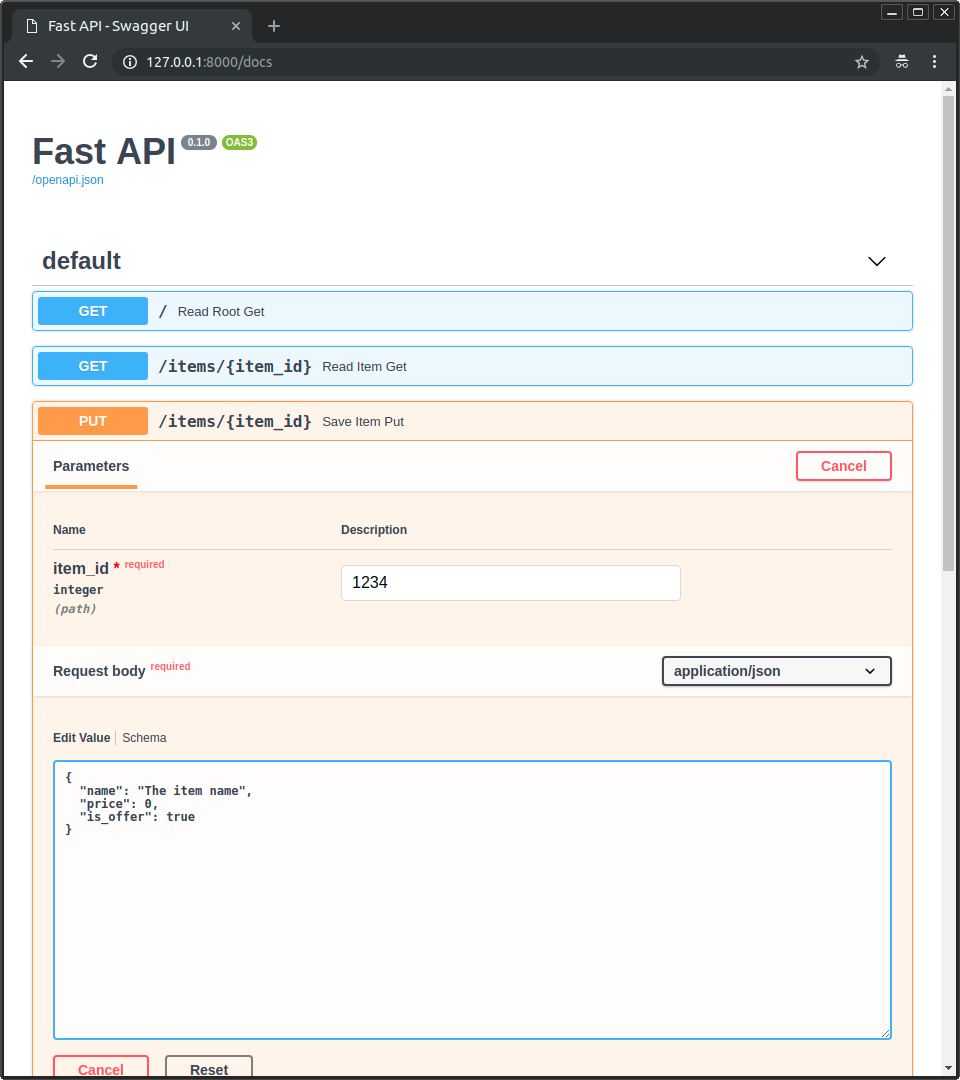- Sort Score
- Result 10 results
- Languages All
Results 1 - 10 of 53 for executed (0.18 sec)
-
docs/en/docs/deployment/concepts.md
Plain Text - Registered: Sun May 05 07:19:11 GMT 2024 - Last Modified: Thu May 02 22:37:31 GMT 2024 - 18K bytes - Viewed (0) -
docs/en/docs/tutorial/bigger-applications.md
* All of them will include the predefined `responses`. * All these *path operations* will have the list of `dependencies` evaluated/executed before them. * If you also declare dependencies in a specific *path operation*, **they will be executed too**.Plain Text - Registered: Sun May 05 07:19:11 GMT 2024 - Last Modified: Thu Apr 18 19:53:19 GMT 2024 - 18.6K bytes - Viewed (0) -
docs/en/docs/advanced/events.md
You can define logic (code) that should be executed before the application **starts up**. This means that this code will be executed **once**, **before** the application **starts receiving requests**. The same way, you can define logic (code) that should be executed when the application is **shutting down**. In this case, this code will be executed **once**, **after** having handled possibly **many requests**.
Plain Text - Registered: Sun May 05 07:19:11 GMT 2024 - Last Modified: Thu Apr 18 19:53:19 GMT 2024 - 7.8K bytes - Viewed (0) -
tests/test_tutorial/test_extra_data_types/test_tutorial001.py
data = { "start_datetime": "2018-12-22T14:00:00+00:00", "end_datetime": "2018-12-24T15:00:00+00:00", "repeat_at": "15:30:00", "process_after": 300, } expected_response = data.copy() expected_response.update( { "start_process": "2018-12-22T14:05:00+00:00", "duration": 176_100, "item_id": item_id, } )Python - Registered: Sun Apr 28 07:19:10 GMT 2024 - Last Modified: Fri Apr 19 00:11:40 GMT 2024 - 6.8K bytes - Viewed (0) -
docs/en/docs/benchmarks.md
* **Starlette**: * Will have the next best performance, after Uvicorn. In fact, Starlette uses Uvicorn to run. So, it probably can only get "slower" than Uvicorn by having to execute more code. * But it provides you the tools to build simple web applications, with routing based on paths, etc. * If you are comparing Starlette, compare it against Sanic, Flask, Django, etc. Web frameworks (or microframeworks).Plain Text - Registered: Sun May 05 07:19:11 GMT 2024 - Last Modified: Thu Apr 18 19:53:19 GMT 2024 - 3.4K bytes - Viewed (0) -
docs/fr/docs/tutorial/path-params.md
```Python hl_lines="6-7" {!../../../docs_src/path_params/tutorial001.py!} ``` La valeur du paramètre `item_id` sera transmise à la fonction dans l'argument `item_id`. Donc, si vous exécutez cet exemple et allez sur <a href="http://127.0.0.1:8000/items/foo" class="external-link" target="_blank">http://127.0.0.1:8000/items/foo</a>, vous verrez comme réponse : ```JSON {"item_id":"foo"} ```Plain Text - Registered: Sun May 05 07:19:11 GMT 2024 - Last Modified: Thu Apr 18 19:53:19 GMT 2024 - 10K bytes - Viewed (0) -
docs/en/docs/tutorial/response-model.md
* Add a **JSON Schema** for the response, in the OpenAPI *path operation*. * This will be used by the **automatic docs**. * It will also be used by automatic client code generation tools. But most importantly:Plain Text - Registered: Sun May 05 07:19:11 GMT 2024 - Last Modified: Thu Apr 18 19:53:19 GMT 2024 - 17.9K bytes - Viewed (0) -
docs/en/docs/tutorial/testing.md
After that, you just need to install `pytest`: <div class="termy"> ```console $ pip install pytest ---> 100% ``` </div> It will detect the files and tests automatically, execute them, and report the results back to you. Run the tests with: <div class="termy"> ```console $ pytest ================ test session starts ================
Plain Text - Registered: Sun May 05 07:19:11 GMT 2024 - Last Modified: Thu Apr 18 19:53:19 GMT 2024 - 6.2K bytes - Viewed (0) -
docs/pl/docs/index.md
* Kliknij przycisk "Try it out" (wypróbuj), pozwoli Ci to wypełnić parametry i bezpośrednio użyć API:  * Kliknij potem przycisk "Execute" (wykonaj), interfejs użytkownika połączy się z API, wyśle parametry, otrzyma odpowiedź i wyświetli ją na ekranie: 
Plain Text - Registered: Sun May 05 07:19:11 GMT 2024 - Last Modified: Mon Apr 29 05:18:04 GMT 2024 - 19.4K bytes - Viewed (0) -
docs/ru/docs/index.md
* Нажмите на кнопку "Try it out", это позволит вам заполнить параметры и напрямую взаимодействовать с API:  * Затем нажмите кнопку "Execute", пользовательский интерфейс свяжется с вашим API, отправит параметры, получит результаты и отобразит их на экране: 
Plain Text - Registered: Sun May 05 07:19:11 GMT 2024 - Last Modified: Mon Apr 29 05:18:04 GMT 2024 - 25.8K bytes - Viewed (0)